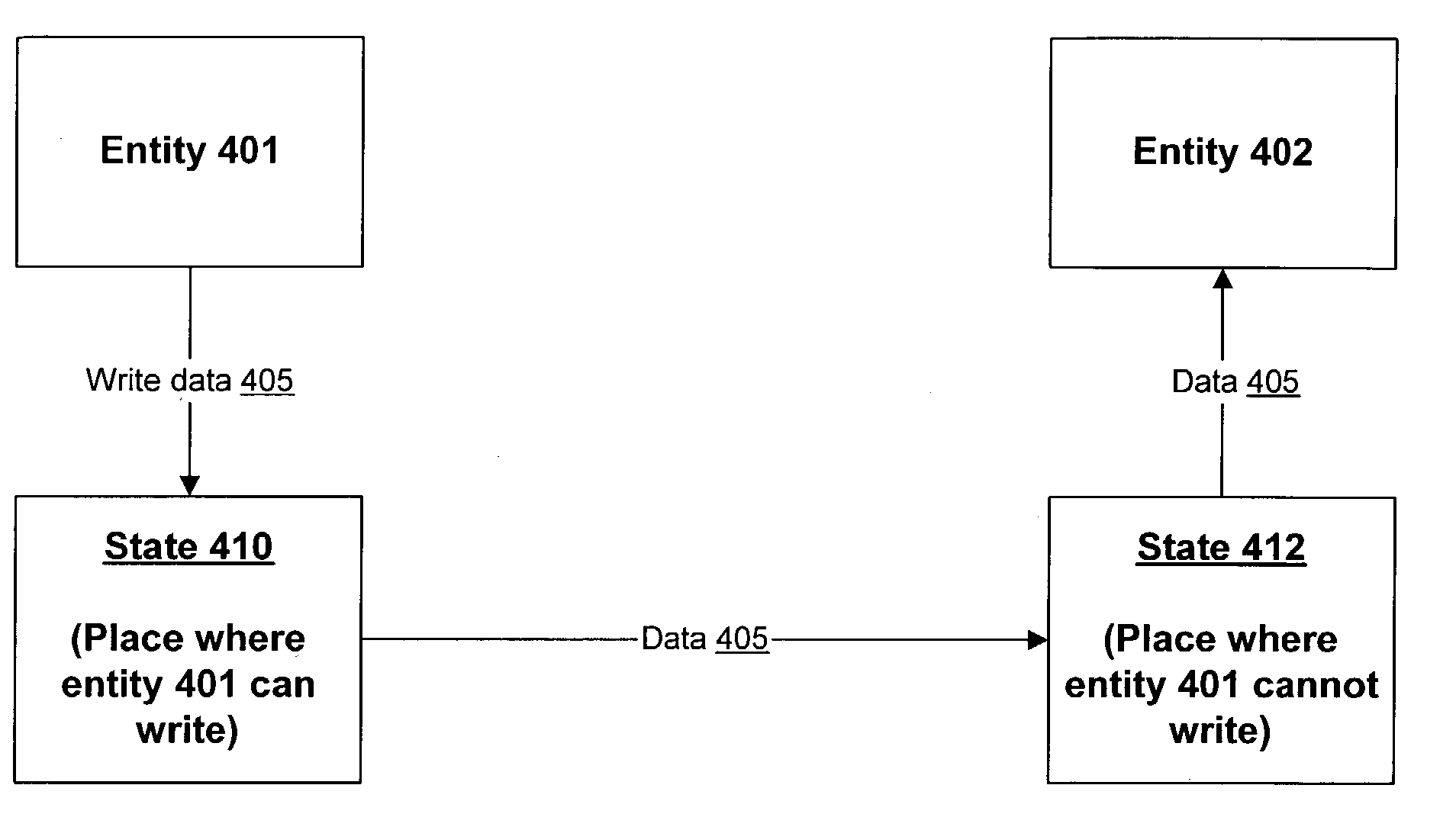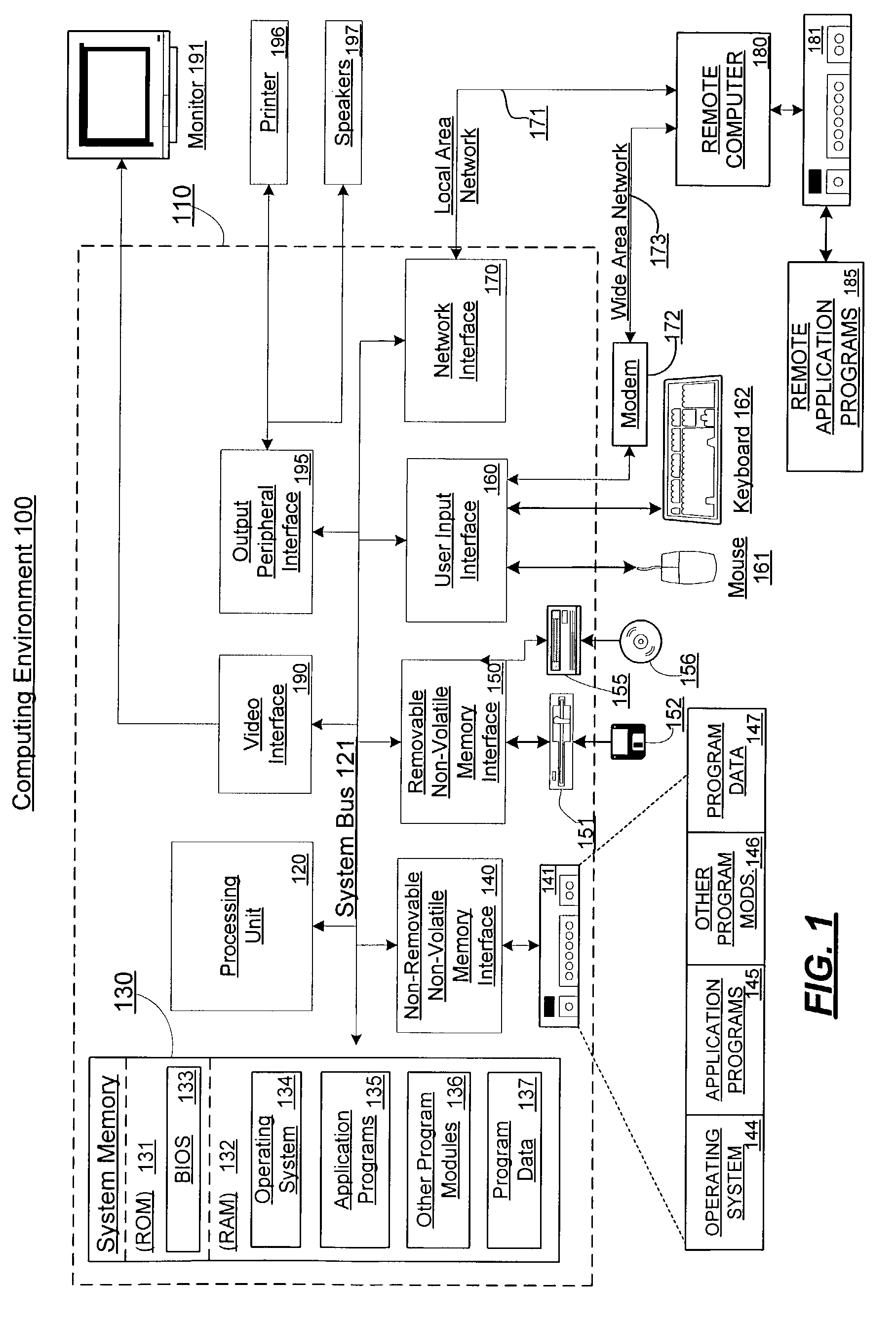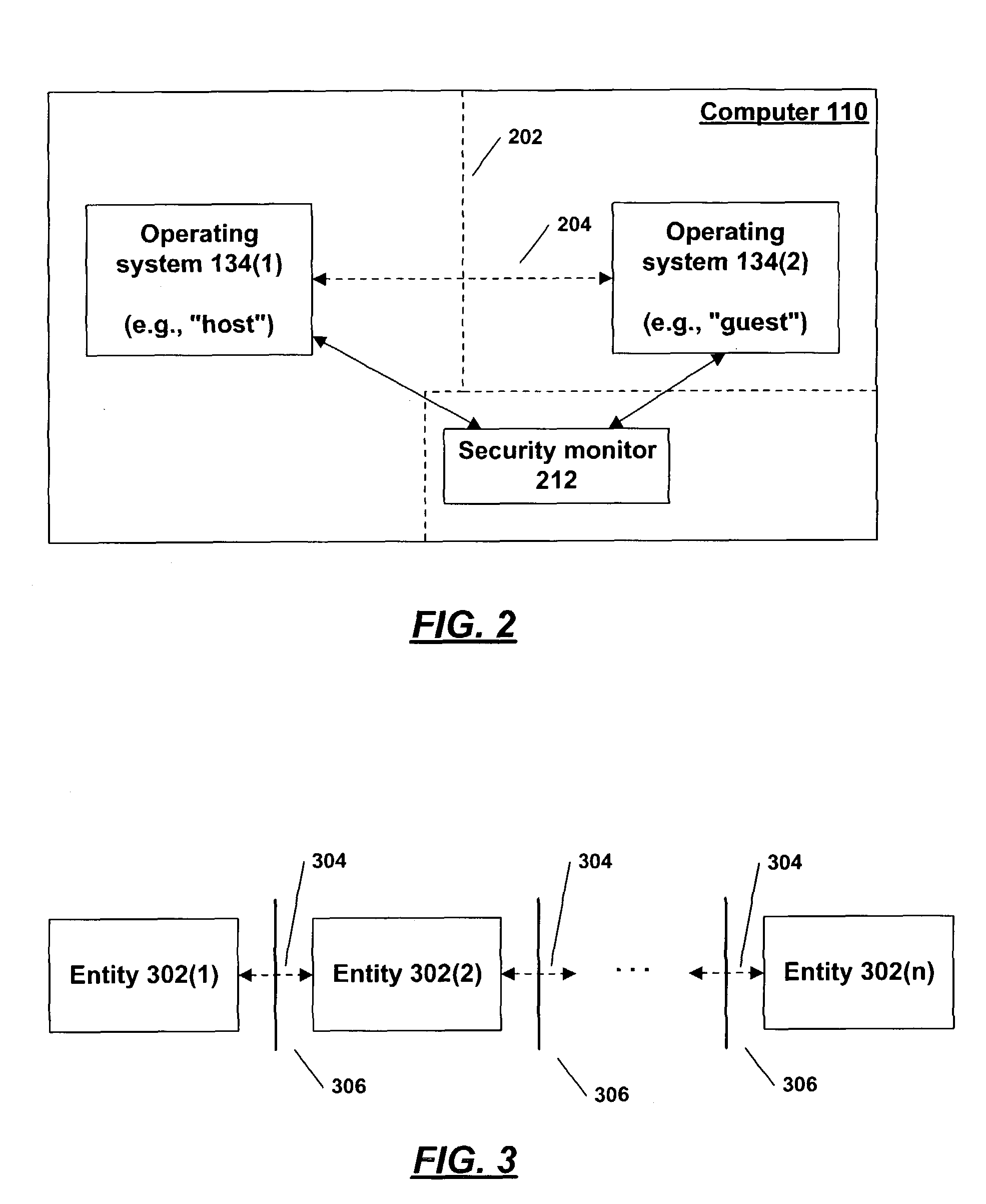[0011]The present invention provides mechanisms that allow two computing environments to interact with each other on a single machine, while preventing events at one of the environments from undermining the ability of another to behave as its is expected to behave. As described below, two or more operating systems that run on a single machine are examples of “environments” that may need to interact with each other on a single machine, although it will be understood that the invention is not limited to a traditional operating system. Moreover, at least some of the techniques described herein can be used, in the general case, to protect any type of
executable entity (e.g., any piece of
software) from any other type of entity.
[0013]One aspect of the invention provides for inter-entity communication in a manner that prevents the sending entity from tampering with the data while the receiving entity is operating on that data. Data provided by the sending entity is placed into a state where it can be read by the receiving entity but cannot be modified by the sending entity. Thus, the receiving entity can perform validation tests on the data (e.g.,
virus scans, signature checks, etc.) without the concern that the sending entity will modify the data during or after the
validation test. This technique guards against the situation in which the receiving entity seeks to protect itself from damaging data by performing a
validation test, and the sending entity fools the receiving entity into accepting bad data by changing the data during or subsequent to the performance of the
validation test.
[0014]Another aspect of the invention provides for the sharing of scheduling facilities between operating systems (or other execution environments that may need to schedule time on a real or
virtual processor). Two operating system may both have the ability to dispatch threads for execution on a processor, but only one of the operating systems needs to maintain a scheduler. For example, a host operating system may have a scheduler, and a guest operating system (e.g., a nexus) may lack a scheduler. In this example, the guest causes a “shadow” thread to be created in the host for each of the guest threads. The shadow thread—which can be scheduled by the host the same as any other thread—causes the guest operating system to be activated with a request that the shadow thread's corresponding guest thread be executed. Since certain types of attacks on the guest could be made by scheduling threads that should not run, the guest performs its own test to determine whether conditions are right to run the thread. If conditions are right, then the guest thread is permitted to run as scheduled; otherwise, the guest thread is not run. This technique allows the guest to borrow the functionality of the host's scheduler, while still protecting itself from the incorrect (or even malicious) scheduling of threads.
[0015]To the extent that the scheduling of threads may depend on synchronization decisions (e.g., a thread may need to wait for a
shared resource), the host and guest can use “shadow” synchronization objects in much the same way as they use “shadow” threads. That is, the host can maintain a shadow synchronization object for each synchronization object maintained by the guest. For example, if a guest thread needs to wait for a
semaphore before running, then the corresponding shadow thread in the host can be set to wait for a shadow
semaphore. If the host scheduler concludes that the shadow
semaphore is available and schedules the shadow thread that is waiting for it, the shadow thread then invokes the guest which can then verify that its own records show that the semaphore is available before allowing the thread to run. This technique allows synchronization objects at the host to be used to make scheduling decisions, while preventing an adversarial host from manipulating the synchronization object to trick the guest into thinking that an awaited-for resource is available when it is not.
[0017]Another aspect of the invention allows a guest to use the interrupt service routines of the host in a secure way. Certain types of guests (e.g., a nexus) should not run any of the host's code, including the host's interrupt service routines, because these routines might cause the nexus to behave in an unexpected way that is outside of the guest's behavioral specification. Thus, when an interrupt occurs in the guest, the guest can exit to the host, while indicating what type of interrupt occurred. The host's interrupt service routine for that type of interrupt can then execute normally.
 Login to View More
Login to View More  Login to View More
Login to View More 


